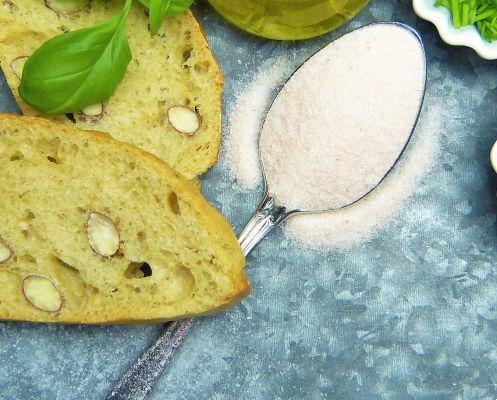
In nature, mushrooms and yeasts would not be ours main source of food: animals consume it rarely, in limited quantities and only in the absence of other foods. In short, they are "spare".
Unfortunately, however, in our culture flour and yeast to work them they have become the basis of nutrition. Could this also be the reason why our body “rebels” at some point? Let's start from here to learn more about what is defined yeast intolerance.
Yeast intolerance: what it is
First of all, a clarification on the terms: from the scientific point of view the food intolerances I'm just the gluten-free one (celiac disease), the favism is that lactose, which is caused by an enzyme deficiency. In all other cases of adverse reaction to food, we can speak more properly of “ifood-related inflammation".
What is it about in case of "yeast intolerance"? First of all, what are yeasts? The classic brewer's yeast for bread and baked goods it is the microorganism Saccharomyces cerevisiae, while the natural yeast, base of the "mother yeast”And is obtained by fermenting fresh pasta made from flour and water, with Saccharomyces and other species of yeasts and various non-pathogenic bacteria.
Yeast intolerance also manifests itself with the intake of certain cheeses (for example, blueberries or those with an edible crust) and fermented foods.
One can therefore hypothesize one gastrointestinal reaction excessive consumption of leavened or fermented foods, which include both bread, pizza and sweets and cheese: it's not about real allergies since in yeast intolerance the values of IgE antibodies are not modified, but it seems from recent studies that there are still imbalances in the production of other cells and substances of the immune system (IgG).
Often in the presence of "Intolerances" to various foods the triggering cause is to be found inintestine: I know it intestinal wall it is not as compact as it should be, some molecules from food could cross it, entering our body and triggering the immune system response.
It can be understood, however, that in this case not only the type of food should be "investigated", but above all the bowel health.
Yeast intolerance can manifest itself concomitantly or after taking certain foods (of which it will be appropriate to make an accurate list) with different transitory modalities and strictly linked to food intake:
> abdominal swelling;
> irregular bowel, with constipation or diarrhea;
> flatulence;
> heartburn;
> tiredness;
> sleep disturbances;
> nervousness.
If, on the other hand, the complaints persist for a long time, it is important to contact your doctor to exclude the presence of certain gastrointestinal diseases.
Read also intestinal bacterial flora, how to take care of it >>
Yeast intolerance: natural cures
As seen above, in case of inflammatory reactions after food intake, there are several ways to go:
> Identify the "trigger foods”: Bread, breadsticks, rusks, biscuits, crackers, sweets, beer but also yogurt, cheese, vinegar, soy sauce, mayonnaise, bouillon cubes, mushrooms and cheeses that contain mold such as gorgonzola.
> Make a elimination diet temporarily removing triggering foods
> Have bowel care, restoring the correct bacterial flora through the use of precise and targeted bacterial strains
Only later, when the intestine has regained its health and balance, they can be reintroduced food, in small quantities. And also subsequently their consumption must be moderate.
Read also
> Yeast substitutes
> The yeast-free bread in 3 variations
Copyright: jirkaejc / 123RF Stock Photo


























